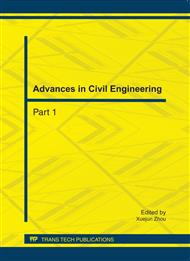p.3043
p.3047
p.3051
p.3057
p.3061
p.3068
p.3073
p.3077
p.3085
A Model-Based Online Fault Detection Method for Air Handling Units of Real Office Buildings
Abstract:
The increasing performance demands and the growing complexity of heating, ventilation and air conditioning (HVAC) systems have created a need for automated fault detection and diagnosis (FDD) tools. Cost-effective fault detection and diagnosis method is critical to develop FDD tools. To this end, this paper presents a model-based online fault detection method for air handling units (AHU) of real office buildings. The model parameters are periodically adjusted by a genetic algorithm-based optimization method to reduce the residual between measured and predicted data, so high modeling accuracy is assured. If the residual between measured and estimated performance data exceeds preset thresholds, it means the occurrence of faults or abnormalities in the air handling unit system. In addition, an online adaptive scheme is developed to estimate and update the thresholds, which vary with system operating conditions. The model-based fault detection method needs no additional instrumentation in implementation and can be easily integrated with existing energy management and control systems (EMCS). The fault detection method was tested and validated using in real time data collected from a real office building.
Info:
Periodical:
Pages:
3061-3067
Citation:
Online since:
September 2011
Authors:
Keywords:
Price:
Сopyright:
© 2011 Trans Tech Publications Ltd. All Rights Reserved
Share:
Citation:


